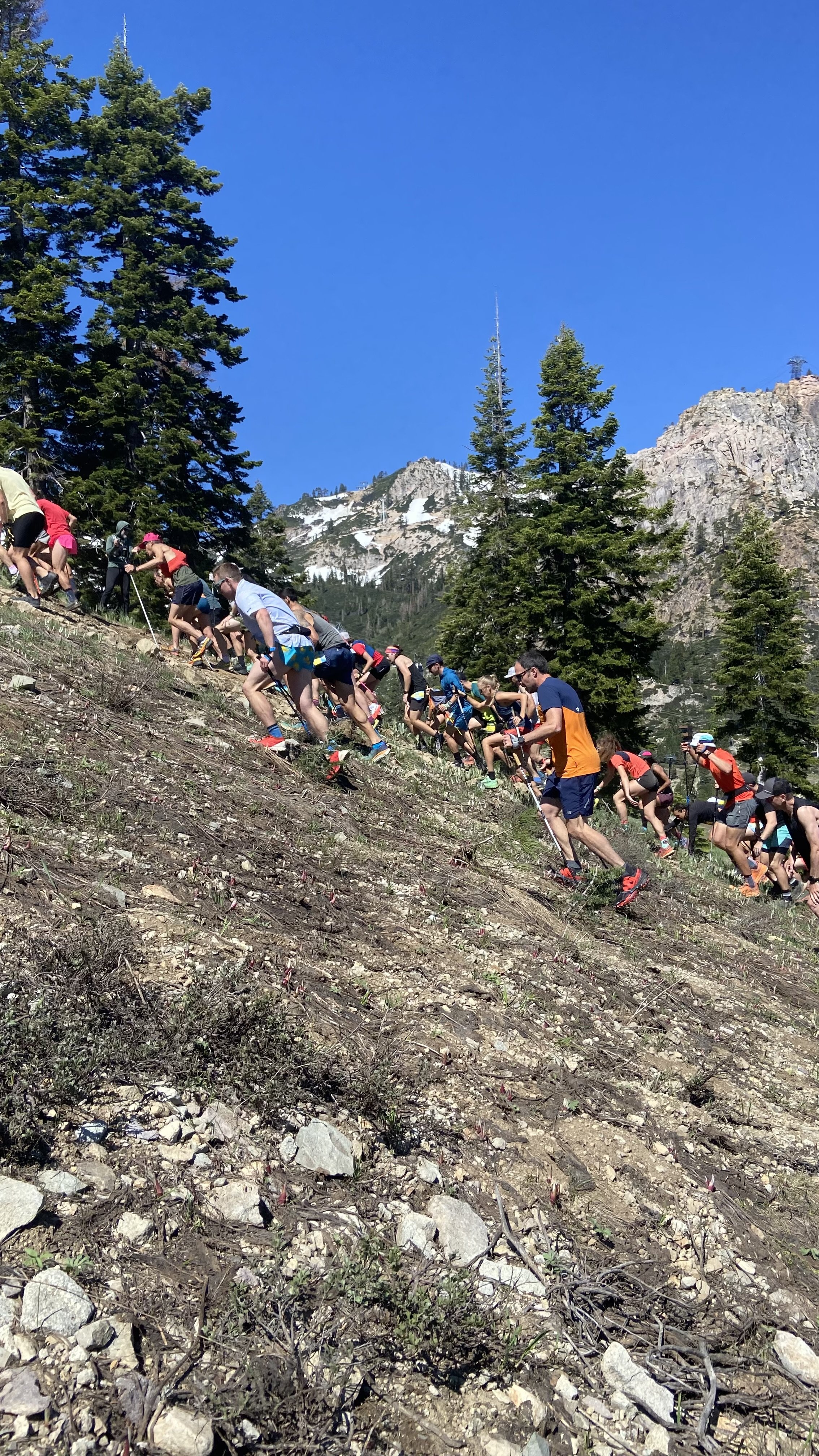Heat Acclimation
If you live in a hot climate, you don’t really need heat acclimation, but living in Truckee we can benefit from it. Whether it’s just to adapt more quickly as temperatures rise, or if we’re preparing for a specific event where it’s typically quite hot (Western States anyone?). Training in the heat is challenging for a variety of reasons, and some recent studies have indicated that it has value beyond just getting really sweaty.
1) Heat Acclimation. Similar to adjusting to altitude (we live at so-called moderate altitude here in Truckee/Tahoe), it takes a little bit of time. While there are short term protocols, endurance athletes see a bigger benefit after 8-14 days of heat acclimation. Meaning that we will start to adapt after 8-14 days. How long within that range is hard to say, but we can work towards heat acclimation throughout the year to ensure we aren’t caught off-guard by an upward shift in temperature. While you are acclimating (especially to hot weather), you should keep the sessions relatively easy and aerobic. As a general rule, save the speed and intensity for when you’ve adjusted more to the hotter clime. Once you are acclimated, occasional passive heat exposure (such as a sauna) should be enough to maintain some level of acclimation.
2) Heat Acclimation Strategies. Let’s focus on two practical strategies we can employ living in the Truckee-Tahoe area. One is to exercise while wearing extra layers of clothing. This effectively increases our core temperature and simulates the effects of being in warmer climates. This should be done inside on a treadmill to maximize the effectiveness during the winter months but likely would be effective with outside runs as well. The other option is a more passive method, which uses the sauna as a way to adapt to heat. Both a more aggressive approach (10 sessions in 14 days) and a more intermittent approach seem to work. For the intermittent approach to be effective, the indicators are that we need to get the sauna quite hot for this to be the most effective). Obviously if you have medical reasons that you shouldn’t be sitting in a sauna over 190 degrees Fahrenheit, this is NOT for you.
3) Hydration. With that said, it’s important to recognize the additional stress that heat exposure and acclimation put on our bodies. It’s important to prioritize hydration. Sports drinks are a great way to maintain hydration levels during heat acclimation (as well as travel and altitude re-acclimation). One of the biggest benefits is electrolyte drinks allow us to retain fluids better, meaning we don’t need to drink as much volume to hydrate and stay hydrated. This also positively impacts our sleep quality (by not getting up in the middle of the night to pee), which improves recovery. As heat training and heat acclimation are stressful, recovery should be emphasized.
4) Benefits. One of the benefits of training in the heat is an increase in blood plasma volume. Once we are acclimated, we typically increase blood plasma levels (non-blood cell part of blood) which can increase our performance in hot weather. Sadly, this doesn’t seem to carry over to mild and cool temperature performance.
Additionally, however, sustained heat training likely increases our hemoglobin mass (how our blood transports oxygen). This is the same benefit professional athletes seek when they do altitude camps. This means that heat training for weeks at a time can actually make us more efficient endurance athletes. There isn’t much evidence on combining heat and altitude training, but if you have to go on a tropical vacation this summer, know that you can still improve your hemoglobin mass by running in hot and humid temperatures.

